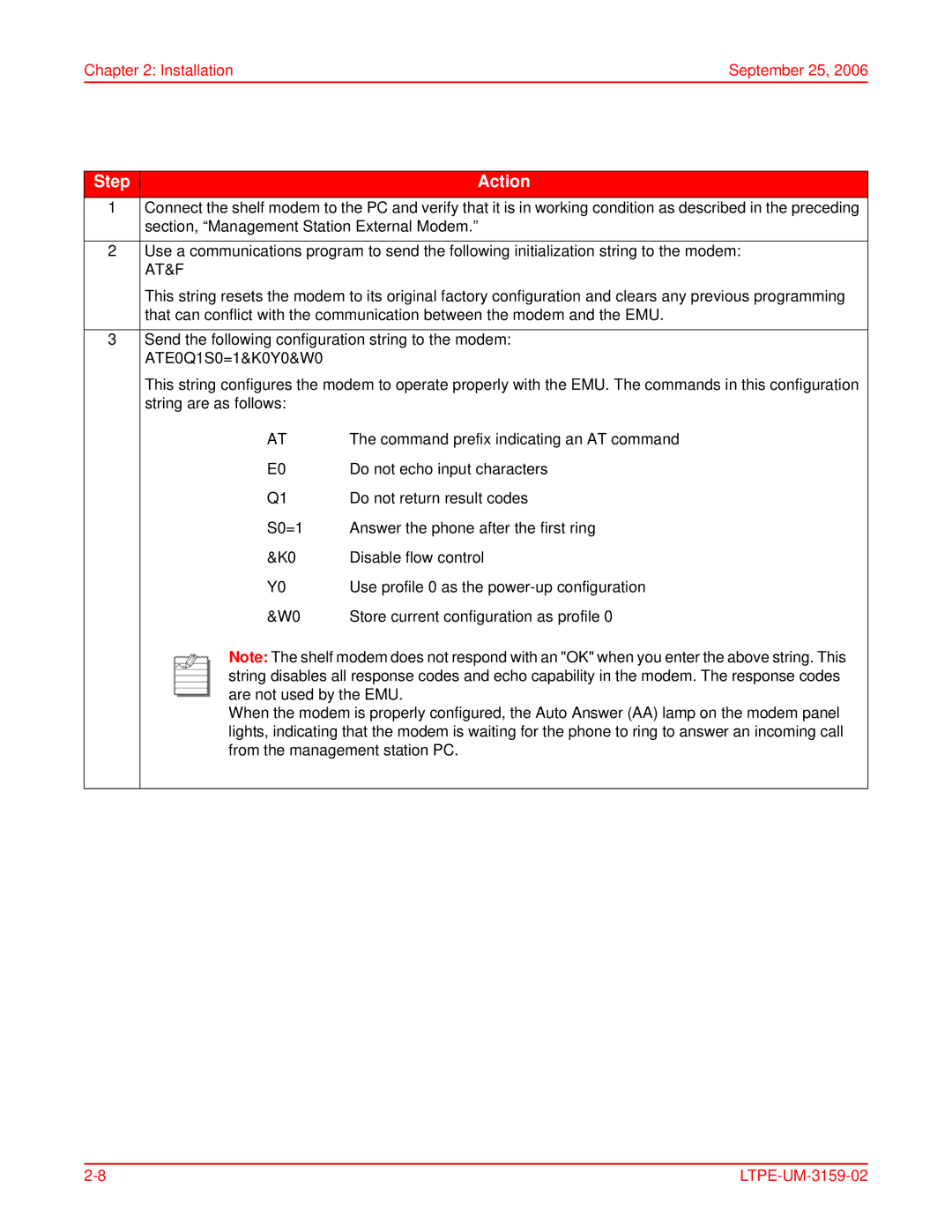
Chapter 2: Installation | September 25, 2006 |
Step |
| Action |
1 | Connect the shelf modem to the PC and verify that it is in working condition as described in the preceding | |
| section, “Management Station External Modem.” | |
|
| |
2 | Use a communications program to send the following initialization string to the modem: | |
| AT&F |
|
| This string resets the modem to its original factory configuration and clears any previous programming | |
| that can conflict with the communication between the modem and the EMU. | |
|
| |
3 | Send the following configuration string to the modem: | |
| ATE0Q1S0=1&K0Y0&W0 |
|
| This string configures the modem to operate properly with the EMU. The commands in this configuration | |
| string are as follows: |
|
| AT | The command prefix indicating an AT command |
| E0 | Do not echo input characters |
| Q1 | Do not return result codes |
| S0=1 | Answer the phone after the first ring |
| &K0 | Disable flow control |
| Y0 | Use profile 0 as the |
| &W0 | Store current configuration as profile 0 |
| Note: The shelf modem does not respond with an "OK" when you enter the above string. This | |
| string disables all response codes and echo capability in the modem. The response codes | |
| are not used by the EMU. | |
| When the modem is properly configured, the Auto Answer (AA) lamp on the modem panel | |
| lights, indicating that the modem is waiting for the phone to ring to answer an incoming call | |
| from the management station PC. | |
|
|
|
